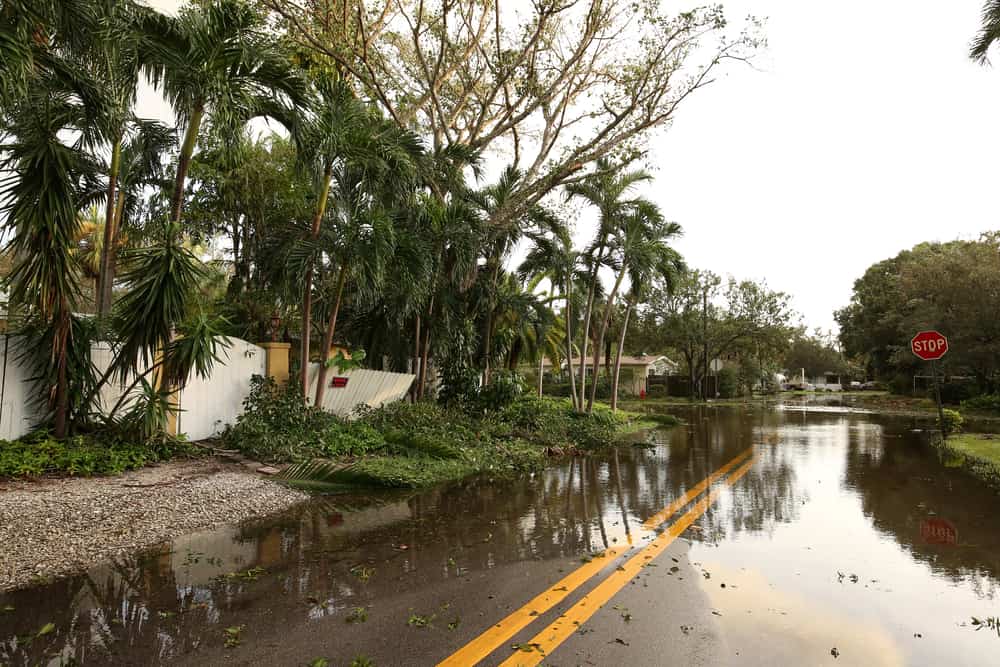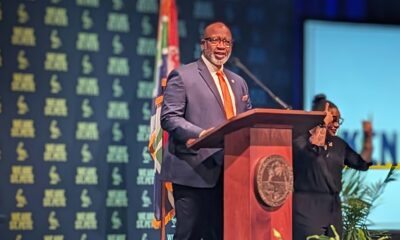Comm Voice
Community Voices: Regional resiliency action plan in development

Welcome to the Catalyst’s Community Voices platform. We’ve curated community leaders and thinkers from all parts of our great city to speak on issues that affect us all. Visit our Community Voices page for more details.
Making St. Petersburg and Pinellas County resilient is more important than ever, whether it’s working to mitigate flooding in low-lying areas, or to help our economy be able to withstand major negative events like the Covid-19 pandemic.
But we can’t take on this challenge alone. Municipalities and companies around west-central Florida need to work together to reach resiliency goals, which is why Pinellas County, the city of St. Petersburg and 14 other cities in Pinellas County are members of the Tampa Bay Regional Resiliency Coalition. And the group made good progress last year toward making our area more resilient to extreme weather, sea level rise and economic challenges.
The three-year-old Coalition, a group of 31 area municipalities and more than 90 private-sector companies, held the first resiliency summit of its kind in our region in January 2020. Over two days, the Coalition established priorities for area-wide issues to be included in a Regional Resiliency Action Plan.
This year, the Coalition will turn these regional priorities into actionable ideas for local municipalities with the help of the Tampa Bay Regional Planning Council, tasked with moving the Coalition’s work forward.
In Pinellas County, our coastlines are of great concern for flooding and sea level rise, but it’s also important to remember that low-lying areas off the coast can be prone to flooding, too. Addressing these issues isn’t simple or easy, as the city of St. Petersburg has found while moving forward with initiatives like creating rules for new development projects in coastal areas.
As for the economy, we need to have up-to-date information and statistics to understand who is most vulnerable. The Regional Planning Council was heavily involved in a project to collect such data in 2020, and efforts like these need to continue.
Later this year, the Regional Planning Council will hold workshops and input sessions to define consensus for the Regional Resiliency Action Plan. We expect the plan to include recommendations on everything from making our area’s highways better able to withstand extreme weather, to mitigating neighborhood flooding by installing backflow preventers and storm drains.
The plan will not be designed to tell local municipalities what to do. Instead, it will include recommendations to consider and other information that governments can use in deciding what priorities fit their communities.
The Regional Planning Council is also involved in other resiliency-related programs:
- The Project Phoenix model, showing the potential impacts of a Category 5 hurricane on our area, was updated in 2020. Project Phoenix’s trainings teach business owners how to prepare for a disaster, through actions like creating continuity plans, evaluating insurance needs, and developing human resource plans.
- A project called Resilient Tampa Bay, one of 11 throughout the country, assessed the resilience and reliability of Tampa Bay’s transportation system, finding that nearly one in five of Tampa Bay area’s roadways are highly or moderately vulnerable to storms, sea level rise and heavy precipitation.
- Local housing, resilience, and recovery planning experts and community leaders are using a two-year grant from JPMorgan Chase to assess potential risks that local communities face from extreme weather and sea level rise, and define new strategies and policies to increase affordable, resilient housing development and redevelopment. The Resilience and Energy Assessment of Communities and Housing (REACH) Initiative is working to integrate affordable housing, neighborhoods and community redevelopment into area climate vulnerability assessments, and resilience and sustainability planning.
- The Clear Sky Tampa Bay project is creating a toolkit for integrating disaster risk and resiliency into planning of solar energy sites and storage facilities. The project, one of eight around the country, is creating a regional technical and economic framework for considering the risks from disasters and other resilience factors in planning area sites for solar energy.
- The Tampa Bay Regional Planning Council and five other regional planning councils around Florida will be working over the next three years to develop a statewide approach to flood planning, which will provide a framework for municipalities to create disaster models and mitigation strategies.
Look for updates from the Regional Resiliency Coalition in the coming months, as the Coalition shares details of its action plan for input.
Sean Sullivan is Executive Director of the Tampa Bay Regional Planning Council, which plays a lead role in the Tampa Bay Regional Resiliency Coalition. The Tampa Bay Regional Planning Council brings together governments to coordinate planning for the community’s future and provide an opportunity for sharing solutions among the local government jurisdictions in the Tampa Bay region.







